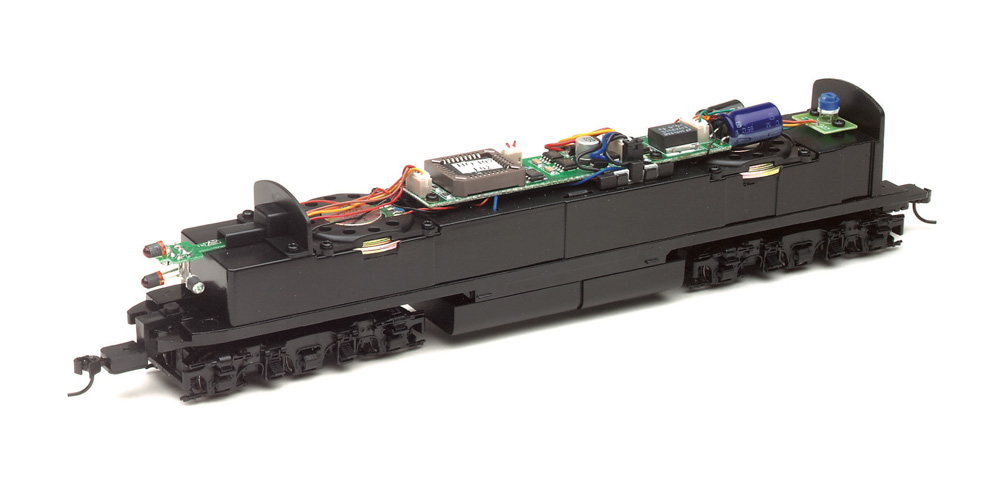
Q: I’ve been a model railroader for many years, and my layouts have all been direct current. My daughter gave me a used Life-Like Proto2000 EMD E6 diesel that she purchased at a train show. The box says it’s equipped with a DCC plug, but an included card said “factory installed sound.” I don’t know whether it came DCC equipped or whether DCC and sound may have been installed afterward.
When I placed this locomotive on my DC layout and applied power, the engine start-up sounds came on loud and clear. But no lights came on and the locomotive didn’t move no matter how much power I applied. Will this locomotive not run on DC? Must I have the DCC removed? I have no idea what make the DCC decoder is. –Kurt Buescher, Crowley, La.
A: Though electronics issues are very difficult to diagnose remotely like this, I have a few ideas.
Idea no. 1 isn’t the most likely, but it’s the easiest to check. It could be that the locomotive isn’t getting enough voltage. Sound decoders take a lot of voltage to get rolling, some as much as 10V. Use a voltmeter to check the voltage on your rails; it might be enough to activate the sounds, but not the motor. If you don’t have a lot of feeders powering your rails, it’s possible that the resistance of the rails is dropping the voltage too low. Try moving the locomotive to a part of your railroad close to your power pack to ensure it’s getting all the power possible. If that works, add more power feeders to your track.
Next, we’ll see if the motor is working. If the box your locomotive came in says it’s equipped with a decoder plug, then your decoder might have been installed after-market. That means it would have come equipped with a small jumper board that plugs into the motherboard in place of a decoder for DC-only operation. If you find this jumper in the box, unplug the decoder and replace it with the jumper (being sure to install it in the right direction). Then see if the engine runs under DC. If not, the motor is your problem. If it does, the problem is the decoder. Run it under DC with no sound or plug the decoder back in and try the next test.
Another possible reason your DCC locomotive won’t move is that the decoder is either not designed to run on direct current or requires programming to do so. I doubt the first is the case, because all decoders have been dual mode for many years now, and if yours wasn’t, I don’t think you’d be getting sound out of it. However, not all dual-mode decoders switch modes automatically. You might have to borrow a friend’s DCC layout to program a Configuration Variable (CV) or two in order to enable analog operation. Try to find out what brand of decoder your locomotive has installed. If there are no marks on the decoder, use a friend’s DCC decoder programming track to read the value of CV8 and find that number on this list of manufacturer codes on the National Model Railroad Association website. Then go to the manufacturer’s website, download their decoder documentation, and look up which CVs need to be set.
It’s also possible that the decoder itself is bad. If it runs when you do the jumper test, replacing the decoder is an option.
Finally, a less easy to fix problem is the possibility that there’s no connection between the decoder and the motor. Maybe it was installed incorrectly, or not plugged in securely. Or perhaps a wire or solder joint between the decoder and motor has broken. Look for the gray and orange wires and make sure they’re securely soldered where they should be.
For more ideas to try when your DCC locomotive won’t move, check out the DCC Currents column in December 2021’s Model Railroader.
Send us your questions
Have a question about modeling, operation, or prototype railroads? Send it to us at AskTrains@Trains.com. Be sure to put “Ask MR” in the subject.













